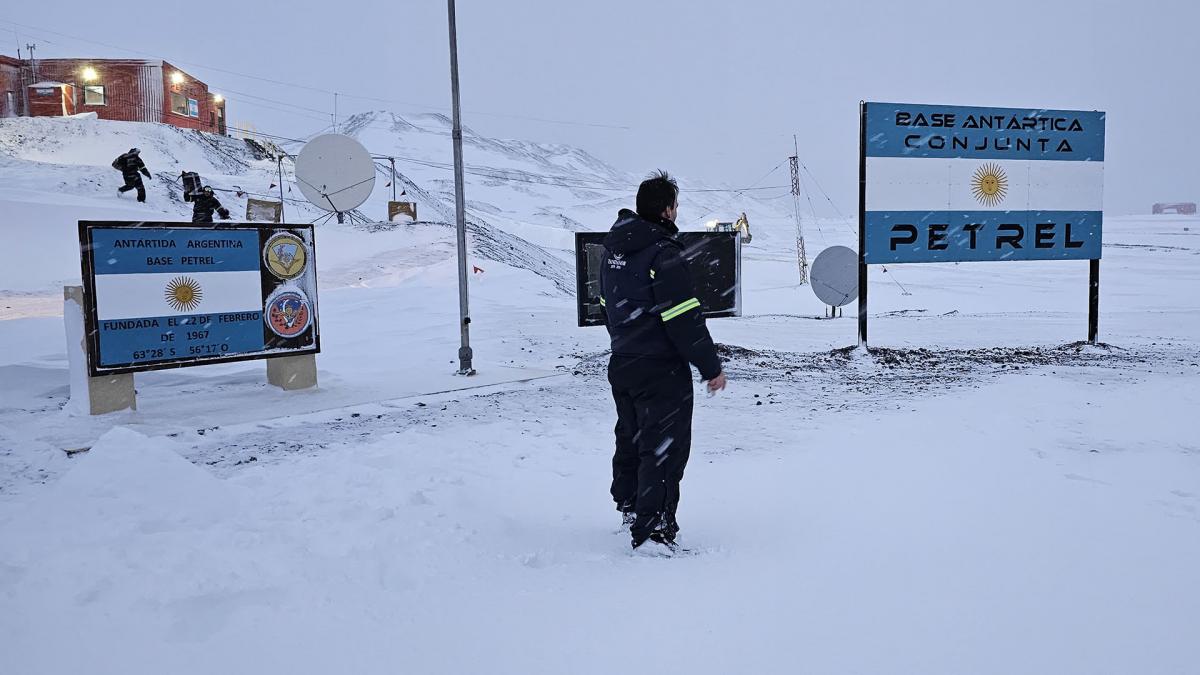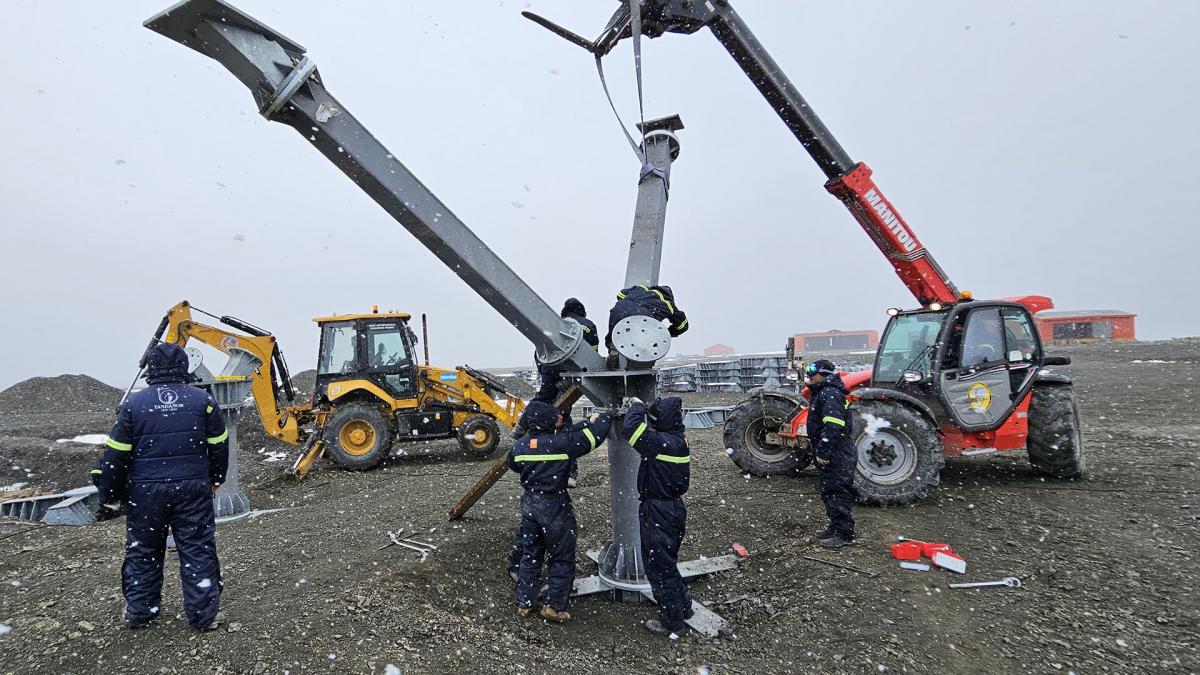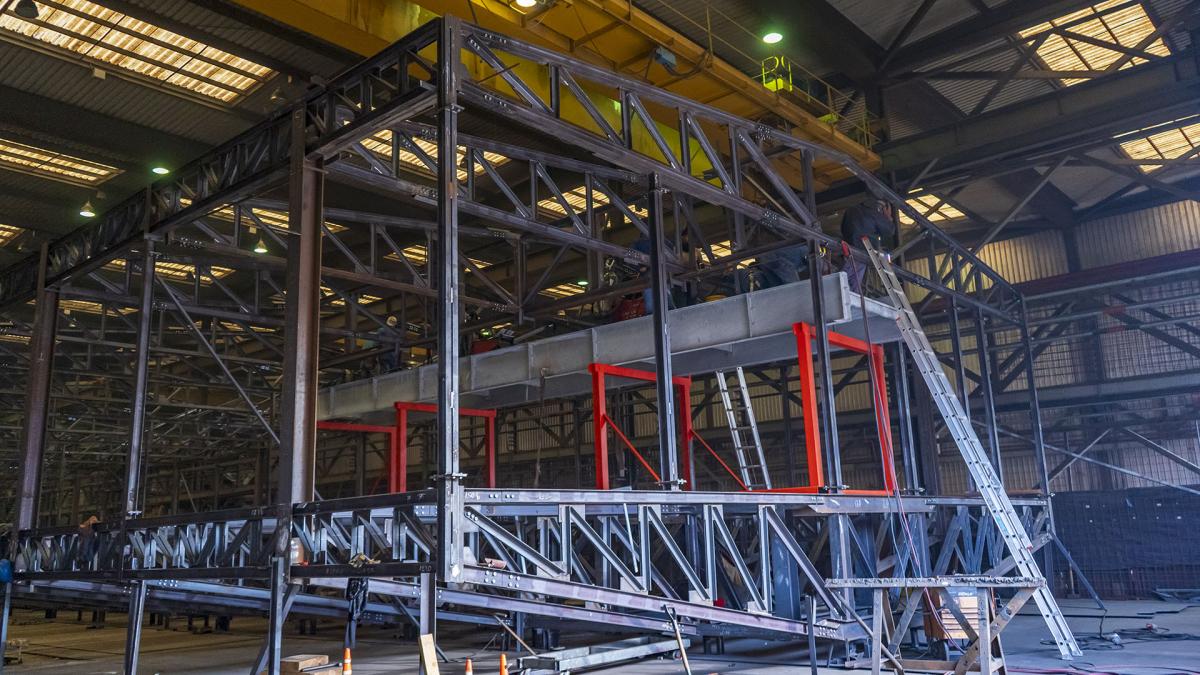A team of engineers from the Argentine Army was deployed this summer to Antarctica to assemble the new habitable house of the Petrel base , a set of thousands of pieces, bolts, nuts and washers of 300 tons of steel , which was designed and built by the Tandanor state shipyard to tolerate the climatic challenges of the white continent.
The project conceived by the shipyard is a multi-module building of which the foundations were installed during last year's Antarctic campaign, while this year progress is being made on the first habitable structures.

The head of the Infrastructure sector of the Infrastructure and Construction Directorate of Tandanor, the naval and mechanical engineer José Luis Oca, had to fly in a Hercules C-130 to the Marambio Base to board a helicopter that took him to the icebreaker "Almirante Irízar" in the one who sailed to the Petrel base, to coordinate the first stage of construction last January.
Oca told Télam: "What we are developing in Petrel is the habitable house that will be occupied by the scientists and the personnel who provide service in each campaign, it is a structure of six modules of which the foundations were placed and, this summer, the first is planned to be built, it is a construction of 800 square meters covered, composed of thousands of pieces that in total weigh more than 300 tons.

"The components that are exposed to weather conditions were built in high resistance steel and all those that make up the structure were hot galvanized at a temperature of 500 degrees Celsius," he explained.
The engineer warned that "Antarctica conditioned the development of the project from the first instances in which we had meetings with members of the Antarctic Joint Command who, on the one hand, gave us the data on the climate and meteorology that the structure had to be able to withstand and Along with that, they explained to us the limitations that this imposes on the logistics of getting anything there."
"On the one hand we had the needs of those who have to inhabit the base and do science there, and we understood that we needed to give them enough square meters to live in relative comfort; but for that we had to listen to those responsible for the construction team who needed the structure had the smallest number of parts possible so that everything could be assembled quickly, and to those responsible for the helicopters who explained to us that the parts had to have a weight limit for transport, and to those responsible for the icebreaker, who explained to us about the size restriction of the components so that they can enter and exit the ship's hold," he explained.
Oca considered that "the new Petrel structure took into account all the technological innovations of recent decades and all the scientific knowledge about the climatic and geographical conditions of Antarctica that was produced at this time, and we also studied the projects of countries that built Antarctic bases in recent years; with all this, a design was consolidated that, in addition, took into account particularities of the Argentine idiosyncrasy that, perhaps, are not contemplated in bases in other countries, such as a good number of square meters in each environment so that those who must spend several months inside have greater comfort.

The professional specified that "these 300 tons of steel traveled by ship to Ushuaia and, from there, the icebreaker 'Almirante Irízar' moved them in successive crossings to Petrel; during the previous summer, the foundations that were installed by the outgoing crew were taken and "The goal this summer is to assemble the first module."
The Petrel base is conceived in this reactivation project as a multimodal node with the capacity to have two landing strips and a loading dock, which facilitates Argentina's projection towards the South Pole and can provide service to Antarctic programs of other countries, their Future facilities will also have important scientific facilities and the capacity to operate as an emergency response center in the region.

The head of the Joint Antarctic Command, Brigadier General Edgar Calandín, told Télam that "the tasks of supporting science and technological developments carried out in our bases and in collaboration with Antarctic programs of other countries are an exercise of sovereignty; The progress in the recovery of the Petrel base materializes a new gateway to the Argentine Antarctic Sector, which is much more than a logistics point because, in addition to being able to operate with planes and ships, it will have the most modern infrastructure to function at the same time. service of Science, as an emergency prevention center and as a link to operate from there to deep Antarctica".
"Another challenge that we have ahead of us is the acquisition of new means, we are immediately managing the incorporation of transport aircraft and we hope that the project for the construction of a new polar transport ship will soon advance, which will give us greater versatility in the organization of the Antarctic campaigns so as not to overload so many tasks on the icebreaker 'Almirante Irízar'," he added.

And he reflected: "I believe that Argentina must continue to strengthen the institutional foundations of its presence in Antarctica, more and more public organizations and agencies should be present and along with them also the provinces with a coastline on the South Atlantic; we also have to encourage participation of civil society in Antarctic issues (,,,) and think of mechanisms so that as many Argentines as possible can get to know this continent through tourism or other sustainable activity compatible with environmental care."
"We are also building new physical foundations for the presence in Antarctica, while the construction of the new buildings at the Petrel base progresses, an initiative to develop the new infrastructure of the Carlini and Brown bases has already begun; and we could say that we are also making progress with the social foundations, because we are working to establish a 'university' in Antarctica through agreements so that the young people who winter at the Esperanza base can study there, taking some content in person and others remotely, and that this mechanism of study can also be used by the crews of other bases in the north of the Antarctic Peninsula," he highlighted.
"Today Argentina is redesigning its Antarctic policy and that will materialize shortly with a new Antarctic policy directive, which has research, development and evolution as its center of gravity, this will allow us to finalize a new master plan of evolution with a search for cooperative integration of all state agencies as an expression of sovereignty," concluded Calandín.






